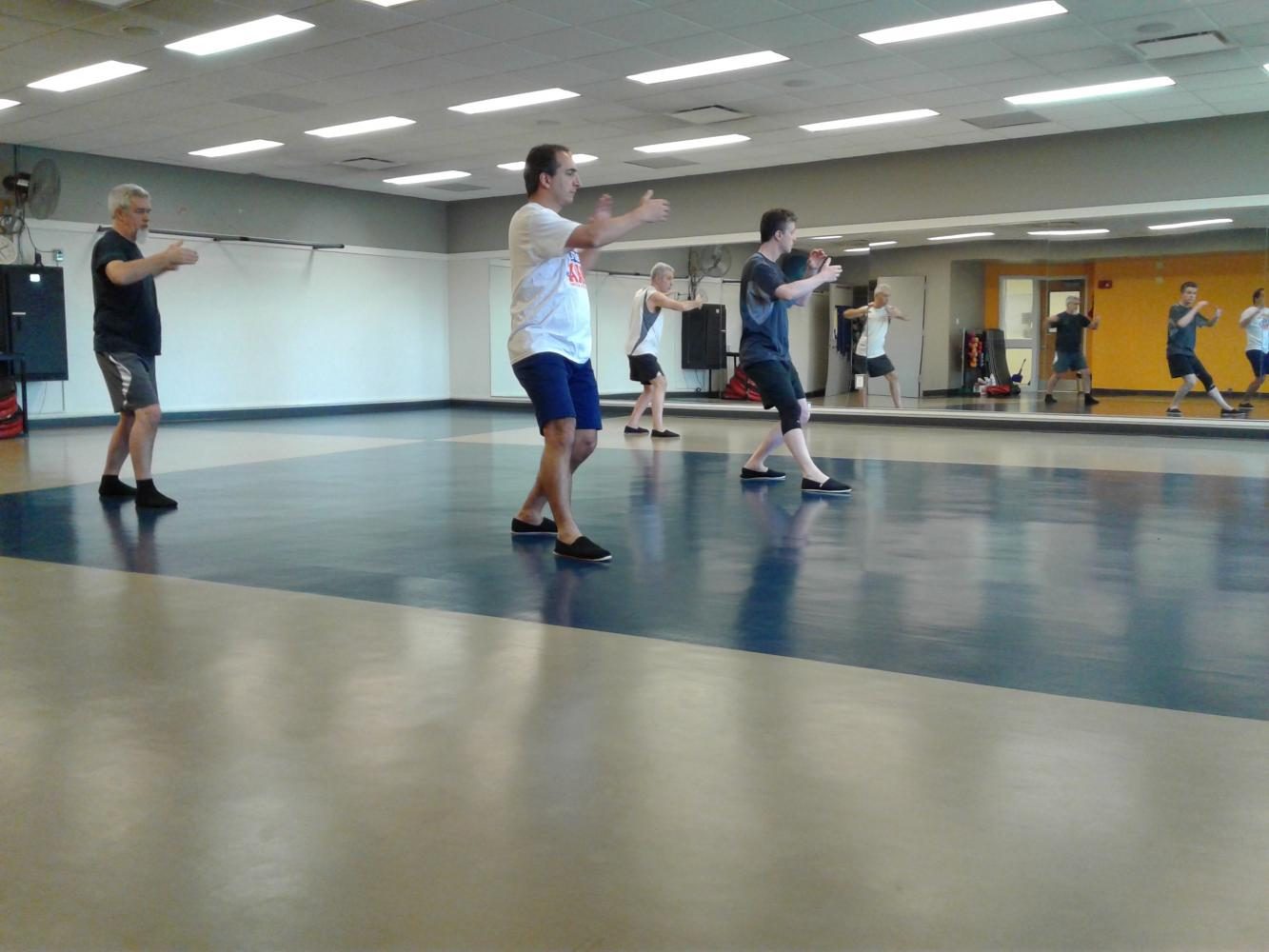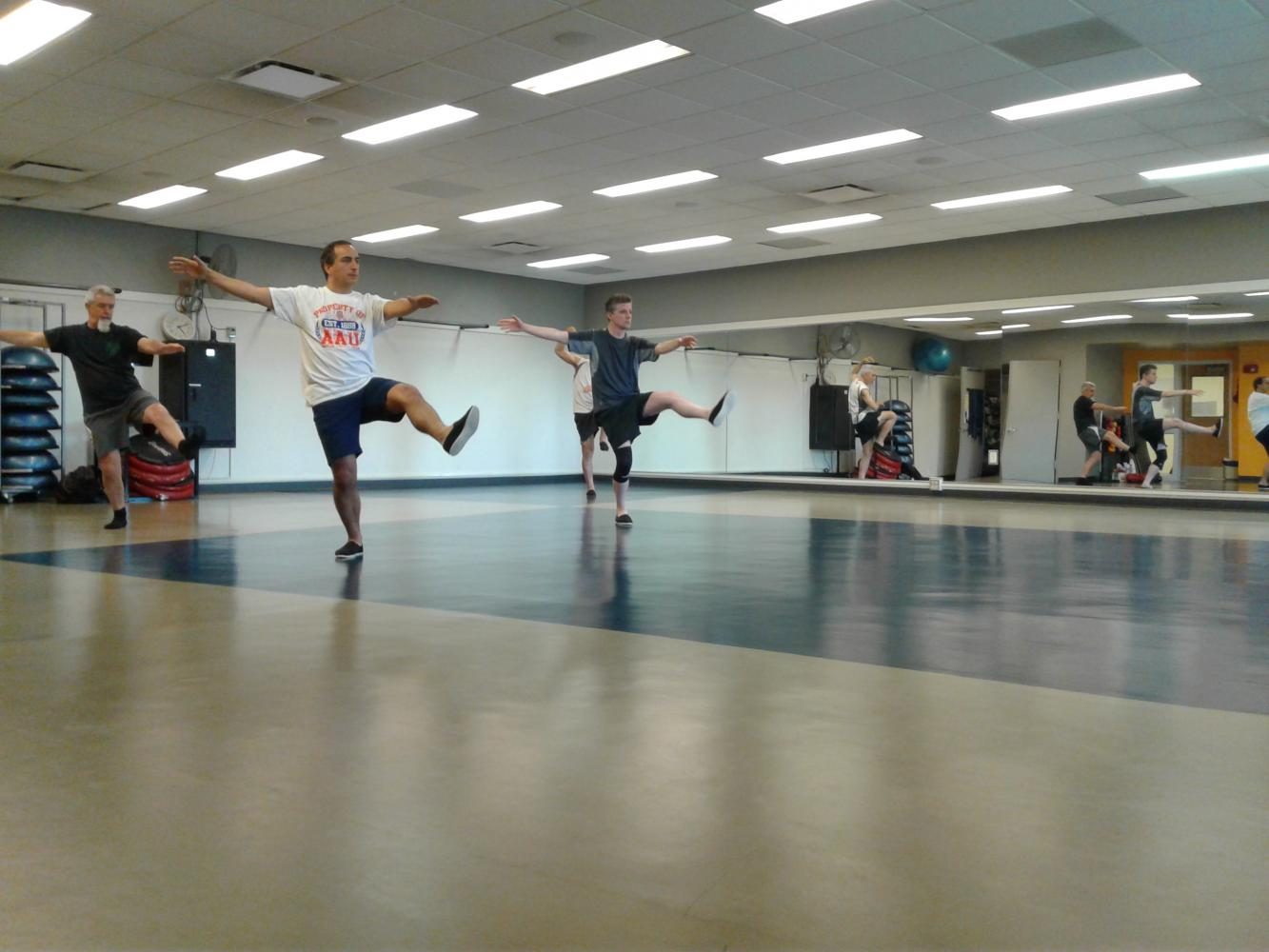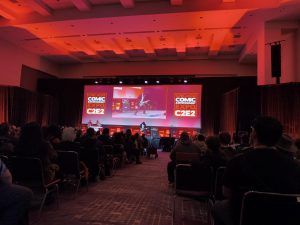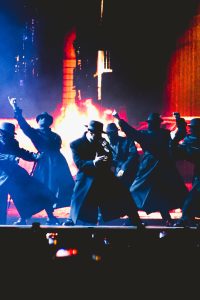NEIU’s best kept secret goes martial
Secco and his Tai Chi class is the best kept secret from the P.E. Complex.
April 29, 2017
Northeastern Illinois University is chock-full of surprises, even when it comes to classes offered in the way of athletics.
I recently sat down for an informative and inspiring interview with NEIU adjunct professor of computer ethics and public policy, Thomas Secco. Our purpose however wasn’t to talk tech or policy. Instead I sat in one of his beginner-level Tai Chi classes, which he instructs on Tuesday afternoons from 4:45 p.m. to 5:30 p.m. in studio 2 of the P.E. Complex
Tai Chi is an ancient Chinese martial art thought to be credited to a Taoist monk named Zhang San Feng. Loosely translated, Tai Chi Chuan (its full name) means “grand ultimate fist or boxing.” According to Secco, “Tai Chi is also called moving meditation, with some schools stressing the aesthetic aspects.”
Secco teaches the Yang style of Tai Chi, which he was certified to instruct in 1999.
“The Yang style traces its roots back to its founder, Yang Lu Chan, born in 1799,” Secco said. “My teacher was Hsu Fun Yuen, whose teacher was Chen Men Ching, two of the best Tai Chi teachers in the United States. Their lineage can be traced all the way back to Yang Lu Chan.”
Tai Chi is practiced in a very slow form as opposed to other typical lightning-fast and offensively-focused martial art forms.
“Tai Chi is stressed as a martial art that emphasizes self-defense. There is also a breathing component, which overlaps with the practice of Qi Gong,” he continued.
This would explain why walking into an ongoing Tai Chi class is so unexpectedly different. There is no loud music pumping here and not even much vocal instruction from Secco. Just the sound of bare feet and soft-soled shoes sweeping the floor and whirring the air in a series of exact body placements and shifts: kicks, punches, blocks and retreats—all done in what looks like a sort of constant push-and-pull, whole body, slow dance meditation consisting of 64 postures.
I asked Secco what sparked his interest in Tai Chi and how long he has been practicing it. He has been active in athletics his whole life, trying his hand out at a wide range of sports, from baseball to boxing. He was not only interested in the physical aspects of practicing Tai Chi, but the intellectual aspects as well.
“Both needs were met by the practice of Tai Chi, which is one of the ‘internal’ martial arts of China. Internal, because it is not only concerned with self-defense but the internal circulation of energy, or ‘chi,’” Secco said.
Some of the benefits of practicing Tai Chi are that core strength and leg strength are greatly improved. In addition, balance and posture are also improved, making it extremely beneficial for people recovering from strokes.
Secco added, “Tai Chi produces a radical improvement in proprioceptive intelligence, physical stamina, perceptual awareness, coordination and confidence.”
If this form of martial arts sounds like a winner, consider attending one of the free beginner or intermediate sessions held on Tuesdays. Check with the P.E. Complex for a current schedule of classes offered. And come prepared to find your chi.









